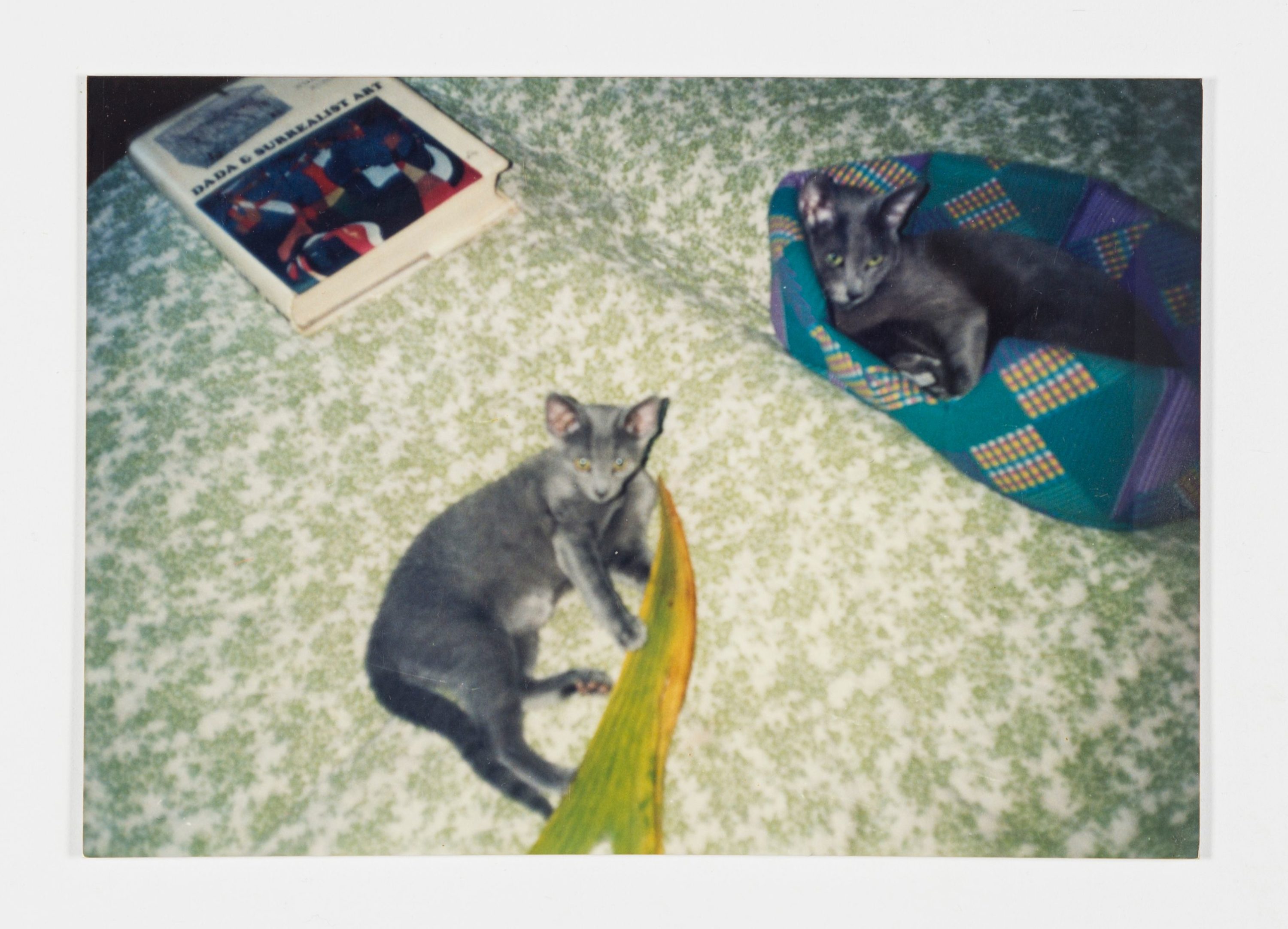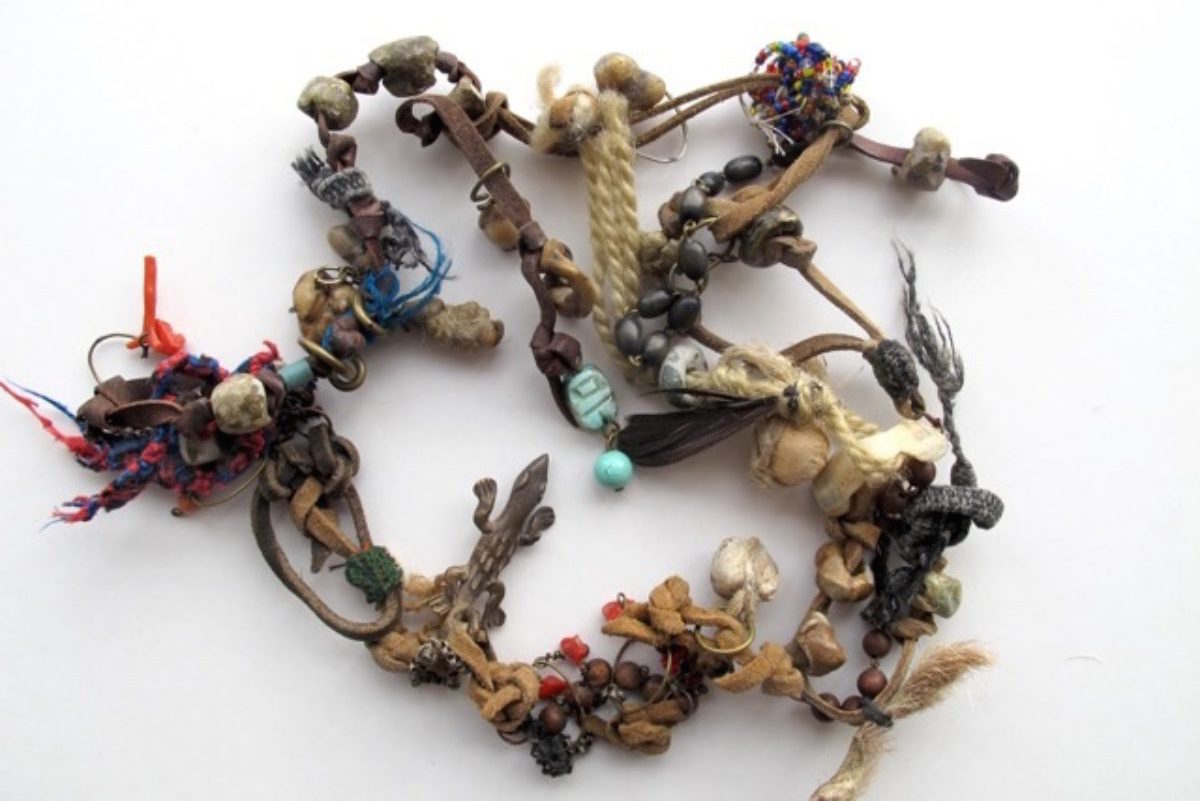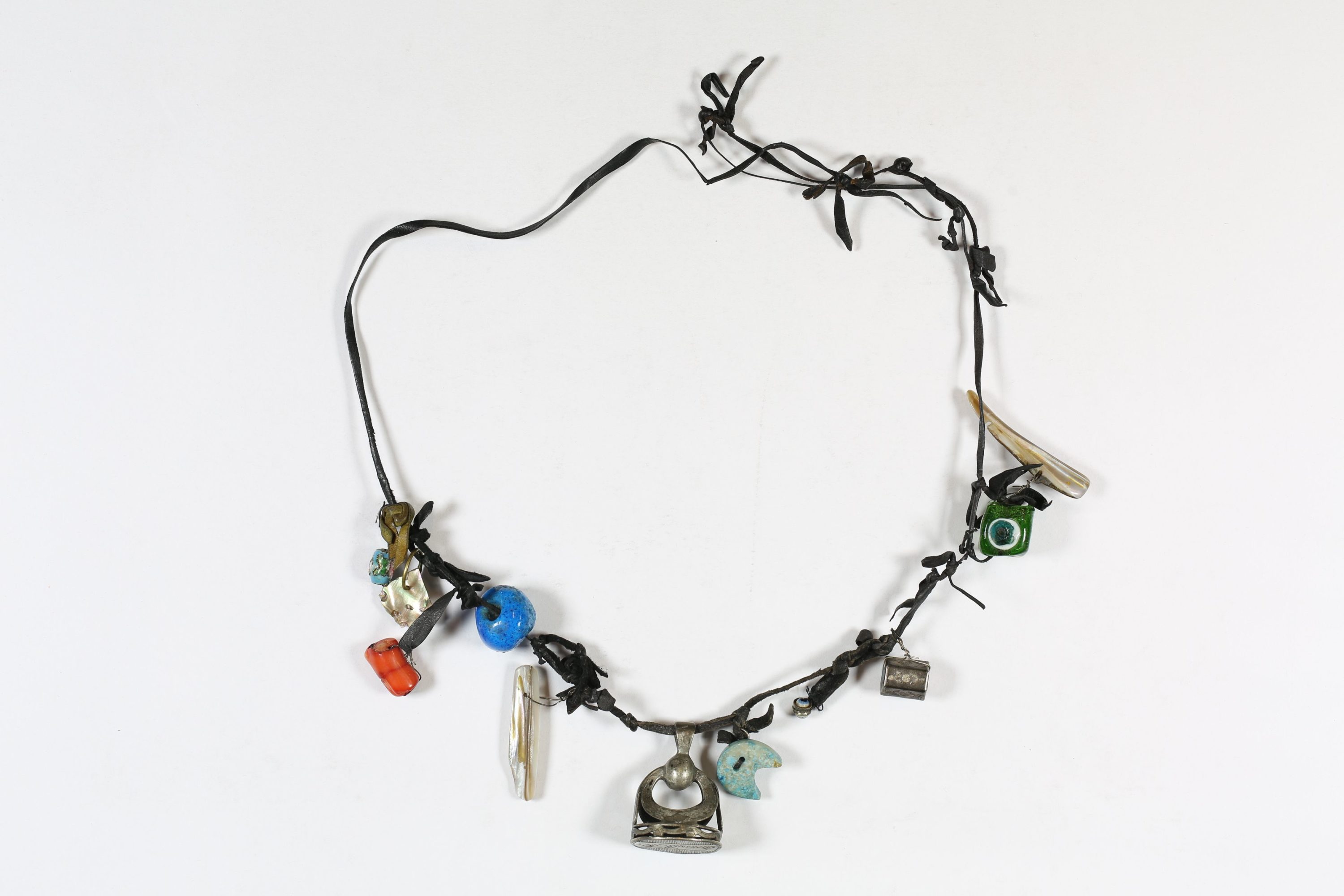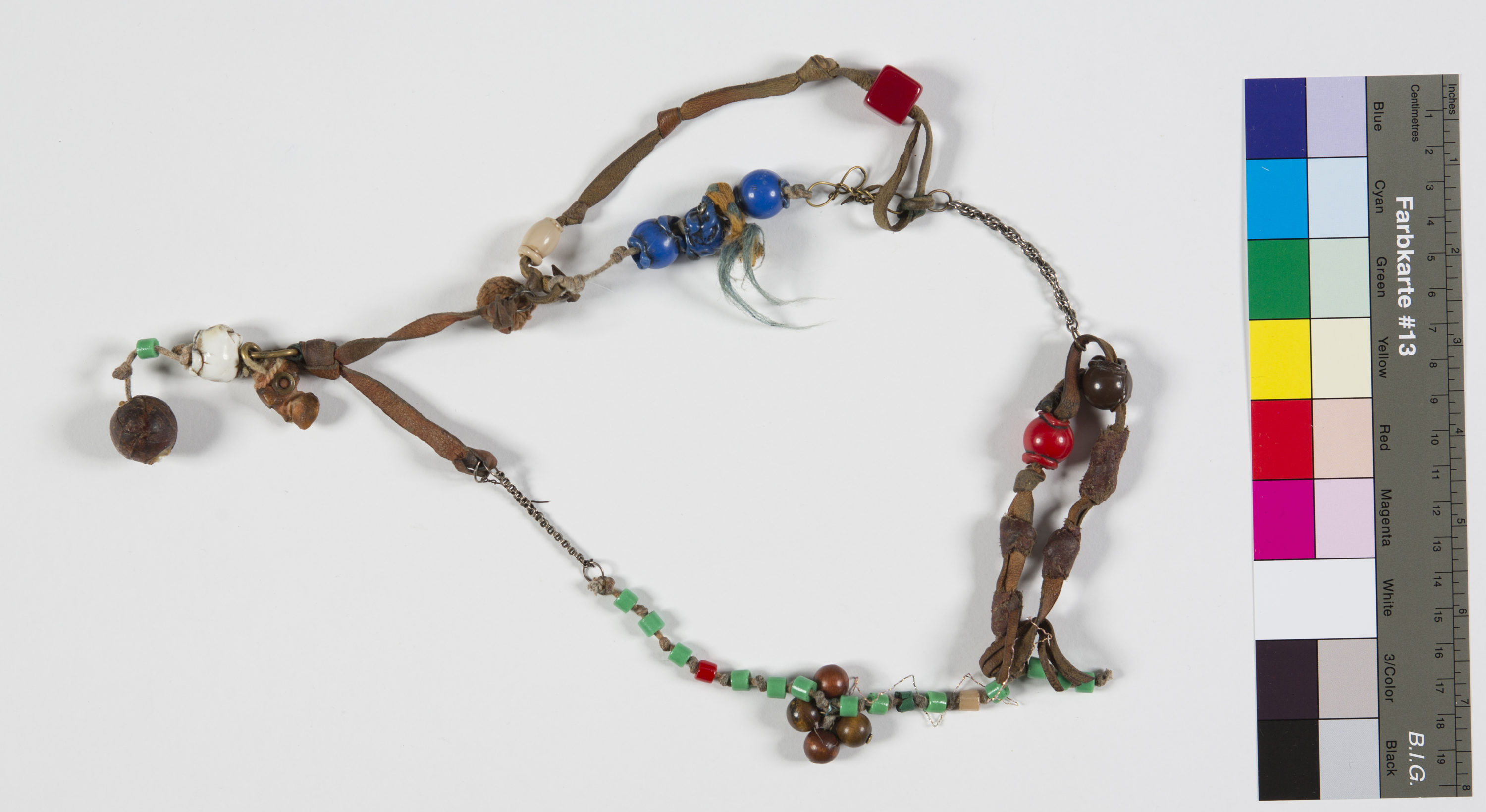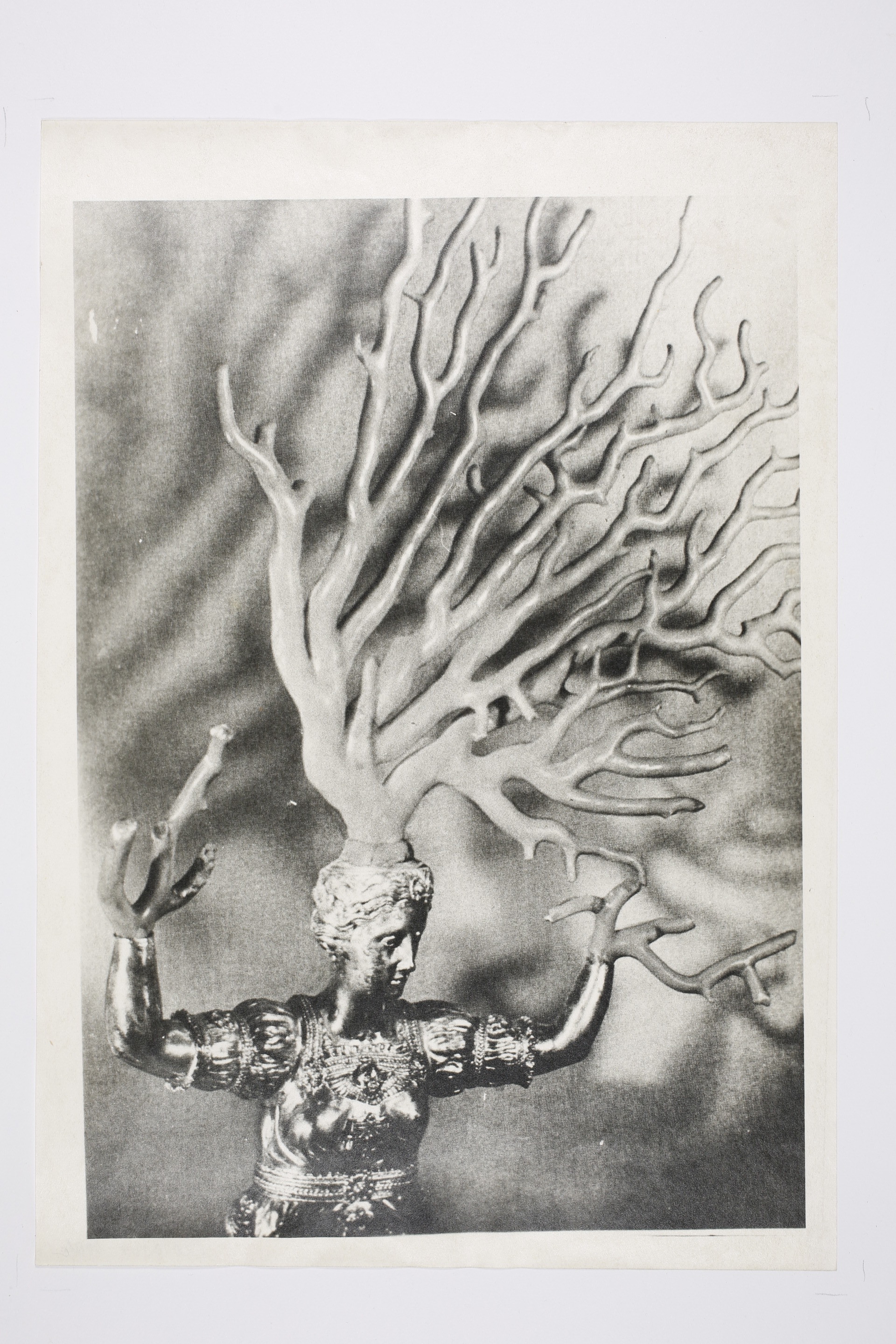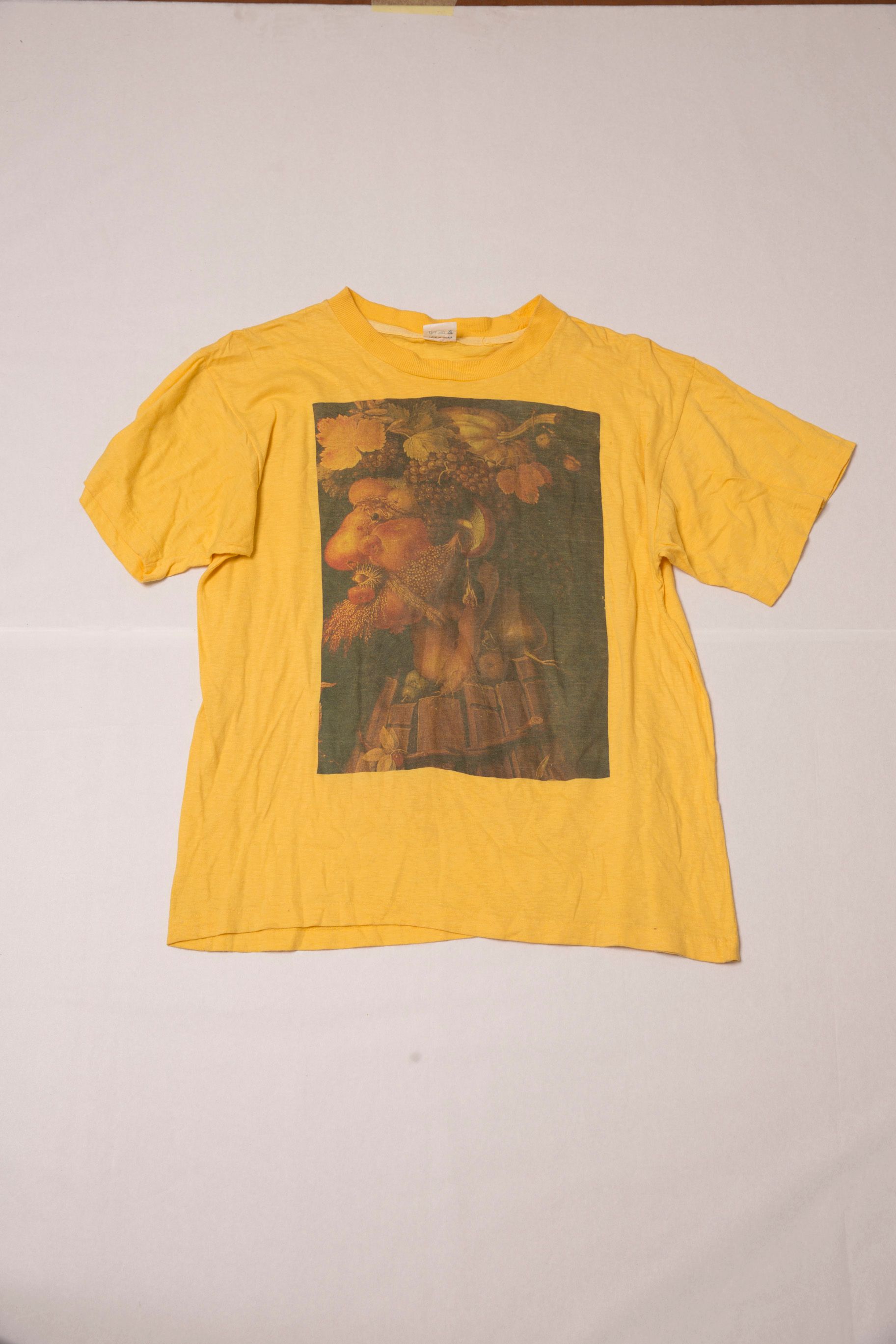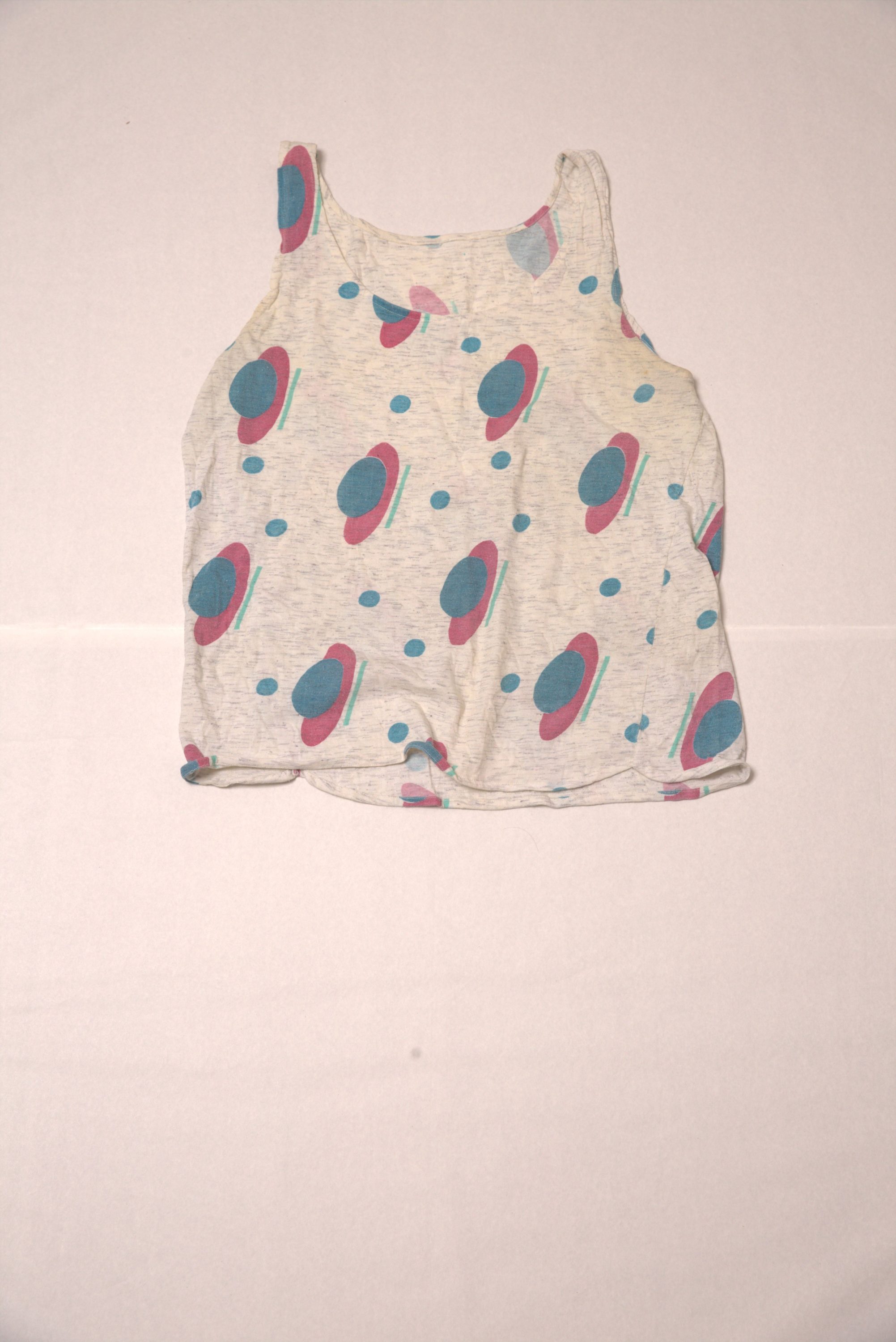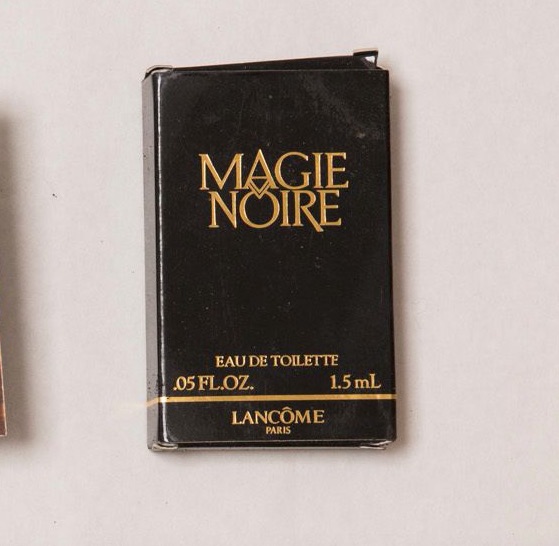Eclipsed and Occluded: Exploring the Archive of Ester Krumbachová
Czech artist and filmmaker Ester Krumbachová (1923–1996) was a key figure in New Wave cinema and deeply involved with films such as the proto-psychedelic Daisies (1966), directed by Vera Chytilová, probably the best known of all films to emerge from the Czech New Wave. Like several other people I know, I first encountered Daisies when it was screened, late at night, on Channel 4 in the late nineties. [1] I remember finding the aesthetics of the film particularly striking, not least because it resonated with many of my interests at the time. My memory of Daisies remained vivid but it was not until 2018 that I learned of Krumbachová and her involvement in the film. It is regrettable that one of the things most frequently stated in discussions of Krumbachová is that she has been so underappreciated and overlooked. While it is true that for many decades her contributions were overshadowed, in more recent years critical interest in her work has grown and it is now acknowledged that her involvement was crucial to the flourishing of Czech film in the late sixties and early seventies. What’s more, the relevance and prescience of her work in relation to the preoccupations of today – to contemporary debates about magic, materialism, the interconnected nature of reality, and sensory forms of knowledge – is indisputable, as her archive in Prague amply demonstrates.
In her essay ‘Negotiating the Archive’, Sue Breakell offers several definitions of what an archive can be, ‘a set of traces of actions, the records left by a life – drawing, writing, interacting with society on personal and formal levels’. [2] The latter is a particularly apposite way to describe the archive of Krumbachová. Like the archive of Francis Bacon now held in Dublin, her archive is essentially a collection of possessions that were left in situ after their original owner died. Krumbachová’s archive is notable for its heterogeneity, containing swathes of material pertaining to the artist’s professional life (photos, scripts, and innumerable sketches of costume designs) that merge with – and are often indistinguishable from – her personal effects. This diverse collection is uniquely valuable not only for researchers to bring new perspectives to Krumbachová’s oeuvre but also as a site of autonomous artistic creation. This is evidenced in the various projects initiated by the curatorial organisation ARE, who have opened up the fertile ground of the archive by inviting responses from artists and researchers, many of whom respond with speculative and subjective approaches; addressing the contents by distilling themes and ideas within. The strategies initiated by ARE prove exemplary in terms of encouraging us to reconsider what archives are and how they should become spaces for creative enquiry rather than repositories of ‘information, as sites of questioning and uncertainty, rather than resolution’. [3] In 2018 I was invited to collaborate with curator Ruth Noack and artist Jesse Jones in programming a series of thematic public events, in Prague’s historic Ponrepo cinema, responding to Krumbachová’s legacy and the contents of the archive. My thoughts on some of the items I encountered in the archive are crystallised here, along with several tangential reflections.
In 1966 Antonín J. Liehm interviewed Krumbachová concerning her work in the world of film. One of the details that emerges from Liehm’s interview is the porosity of the boundaries between the various aspects of Krumbachová’s life. The interview points to something that the material in the archive also reveals: how the personal and professional aspects of Krumbachová’s life were intertwined. When Liehm enquires where Krumbachová’s studio is, she responds: ‘Everywhere, you look – the floor, the walls, the table. Whenever I am involved in a project I start drawing like mad. Right now I am making designs for several film, including films for which someone else wrote the scripts – and I have just gone through some 300 drawings.’ The interviewer offers an evocative account of how Krumbachová has carefully arranged the interior of her apartment in a manner that seems to reflect her personality. He describes how the ‘apartment is full of plants, books, and paintings. An oleander stands in the hall. Apparently there was no room for it between the Beckett’s on the bookshelves, or between the Miro’s and Hieronymous Bosch’s on the walls. There are more plants, pictures, and books until you reach the glass doors and go out on the balcony, which isn’t really a balcony at all but a miniature Garden of Semiramis’. [4] The description given by Liehm evidences the extent to which Krumbachová’s living space was approached as something like a homely Gesamtkunstwerk. There were several reasons for this. Most significantly, she was blacklisted by the Czechoslovak communist government in 1970, which prevented her from working and resulted in her leading an increasingly isolated and hermetic life. Following her official censure, Krumbachová’s energies focused more and more upon transforming the domestic realm and the various creative activities that could be carried out there. While she was prevented from working in the field of film for over two decades, the archive demonstrates how her inherent creativity was conducted in a variety of other directions. The archive offers insights into some of these idiosyncratic practices and the interests that fuelled them such as alchemy, mythology, metamorphosis, sympathetic magic, and the most mysterious of animals – the cat.
One of the activities that seems to have preoccupied Krumbachová was the production of amulets. Since many of these were sold or given as gifts, it is fortunate that several examples can be observed in the archive. Writing on these amulets, Francis McKee remarks how ‘working with Fimo-like modelling clay in her kitchen oven, she created raw designs that combined many materials in each unique necklace. The pieces not only demonstrate her profound interest in alchemy, the esoteric and the transmutation of materials but they relate back to her innovative concepts in costume and set design’. [5] Krumbachová’s amulets are often visually exquisite and were frequently customised in direct response to the idiosyncrasies of the individuals who would wear them. Working as a kind of homeopathic jeweller, Krumbachová selected particular objects and materials as a means of countering the particular weaknesses or imbalances of the wearer. As McKee notes, the archive contains several ‘recipes’ for amulets; one in particular describes the elements needed to construct an ‘amulet for endurance and victory’. Whether or not Krumbachová ‘consecrated’ or ‘activated’ these talismans via some form of ritual magic or meditation is uncertain. However, it is evident that they were intended to have some form of auto-suggestive effect upon the wearer. If Krumbachová believed in the subtle energies and magical properties of various materials and colours, it seems entirely probable that she also gave credence to the potential of magic numbers. In both numerology and astrology, significant numbers – such as a date of birth – are used as a starting point in generating a number (or series of numbers) that possesses a talismanic potency. One of the more mysterious items in the archive is the magic square that features a date, possibly a birthday. Fragments such as this open up new questions rather than providing answers about the artist’s life or practice, contributing further to the mystique that surrounds her.
Of the large number of reproductions of art-historical images in the archive (postcards, images torn from magazines and books), several are by artists associated with the Surrealist movement, including Dalí and Magritte. The world Krumbachová inhabited was undoubtedly informed by Surrealism’s aim to shun the tyranny of rationality and re-enchant everyday life. Moreover, several of the images in the collection allude to folklore, mythology, and fairy tales in which some form of metamorphosis takes place. [6] One of the more intriguing examples is a black-and-white photo of an objet d’art by the acclaimed Mannerist silversmith Wenzel Jamnitzer (1507/8–1585). This artwork gives form to the myth of Daphne, depicting the moment in which she is turned into a tree, using coral to suggest the transformation. Another notable feature of the archive is the quantity of material that pertains to Krumbachová’s feline fascination. It is clear that Krumbachová’s relationship with her cat family was of the deepest importance to her. Of the many aforementioned drawings in the archive, a not insignificant number depict cats; there also numerous cat photos, mainly Polaroids. Aside from these images, a moving letter written from Krumbachová to her cats emphasises the depths of her devotion to the feline companions that she describes as ‘my cats, my inspiration, my great love and Muses’. [7] This fascination is not merely aesthetic or symbolic but also deeply practical. An exploration of the archive reveals several documents pertaining to the welfare and comfort of cats, including a manual on how to catch and care for stray creatures. Her adoration and documentation of her beloved felines is evocative in more ways than one of Carolee Schneemann who was also renowned for her relationship to the feline kingdom and who referred to cats as her ‘mediums’.
There are several instances in the archive in which visual material suggests an interest in creating some form of feline/human hybrid. These drawings call to mind the work of Balthus, the self-proclaimed King of Cats who painted felines repeatedly and seemed to use them as a cipher for human appetites and desires. It is serendipitous that the most extensive book on alchemy in the Krumbachová archive was written by Stanislas Klossowski de Rola, the son of the aforementioned Balthus (aka Balthasar Klossowski de Rola). As is so often the case when researching an archive, subjective connections and coincidences occur. The material becomes a way of navigating ideas and information that are disjointed and have nothing to do with the originator. The symbolic illustrations in Rola’s book are exquisite and one in particular – of a green lion eating the sun – seems noteworthy in light of Krumbachová’s feline obsession. This preoccupation with alchemy is also evident elsewhere in the archive, occasionally in some rather obscure sources; for example, a photocopy of the façade of the Church of Saint-Jacques-de-la-Boucherie in Paris where the famous alchemist Nicolas Flamel (ca. 1330–1418) is buried.
When I first visited the archive of Krumbachová in spring 2018, I was struck by the poignancy of several of the personal items therein, in particular, a yellow T-shirt with a Giuseppe Arcimboldo painting printed on it and a miniature sample of Black Magic perfume. These two items offer a glimpse into the personal style and sensibility of their owner who clearly celebrated, in her life as much as in her work, ‘the jouissance that is available to us only via sensual pleasure and enjoyment’. [8] It’s intriguing to note the presence of a print depicting botanical drawings of a belladonna plant among Krumbachová’s papers. In the past, witches were believed to use a mixture of belladonna as the main ingredient in a hallucinogenic concoction known as flying ointment. The narcotic constituents would be extracted and combined with a lipid before being rubbed into the skin to bring about trance states and hallucinations. The presence of such items in the archive doesn’t necessarily provide a deeper insight into Krumbachovás work, but it certainly expands our awareness of the sensibilities of the woman who has been described as ‘a kind of witch who touched the very matrix of the films she contributed to, articulating the deep interconnectedness of the sensible and the sensual, the animate and the inanimate’. [9]
There are several reasons why Krumbachová’s contribution to Czech film and art has been – until recently at least – somewhat neglected. Aside from her blacklisting, the informal nature of many of her collaborative relationships, added to the fact that the support and guidance she provided to so many was often ostensibly invisible, all served to obscure her presence. It is heartening that the Krumbachová archive – the remnants of an occasionally tragic but constantly creative life – has become the catalyst in changing this. The invigoration of the archive has resulted in expanding awareness of Krumbachová’s work. On another level, the revivification of her legacy should encourage us all to emulate some of the tenets that Ester Krumbachová represents: commitment to one’s personal vision, resilience in the face of adversity, and, last but certainly not least, the ability to have an active fantasy life.
[1] In that period, just before the internet made almost everything available all the time, Channel 4 felt like quite a vital source of cultural material. Watching Rainer Werner Fassbinder’s Querelle (1982) in my early teens was also a formative experience.
[2] Sue Breakell, ‘Perspectives: Negotiating the Archive’, Tate Papers, no. 9 (Spring 2008), https://www.tate.org.uk/research/publications/tate-papers/09/perspectives-negotiating-the-archive.
[3] ARE | are-events.org is a curatorial organisation founded in Prague in 2013; further details at http://are-events.org/en.
[4] Antonín J. Liehm, Closely Watched Films: The Czechoslovak Experience, Routledge Revivals (1974; repr. London: Routledge, 2016), 271.
[5] Francis McKee, ‘A Weakness for Raisins’, MAP Magazine, no. 48, November 2019, https://mapmagazine.co.uk/a-weakness-for-raisins.
[6] This is demonstrated in Krumbachová’s 1970 film Killing the Devil (Vražda ing. Certa), the plot of which has been likened, by David Sorfa, to the Czech folk story of Otesánek.
[7] Letter from EK to her cats, dated 5 July 1985.
[8] David Sorfa, ‘Ester Krumbachová’, in Women Screenwriters: An International Guide, ed. Jill Nelmes and Julie Selbo (London: Palgrave Macmillan, 2015), 253–62.
[9] The archetype of the witch is one that runs throughout the films of Krumbachová. The figure of the ostracised woman, witch, and outcast, returns again and again in films of the late sixties in which she was involved. Krumbachová took inspiration from the court records of witch trials (held between 1678 and 1695) when writing the screenplay for Witchhammer, the title of which was borrowed from the Malleus Maleficarum (1486), a medieval manual for ‘exterminating’ witchcraft. A preoccupation with the figure of the witch is also present in Valerie’s Week of Wonders, whose protagonist is condemned and burned at the stake. Finally, Krumbachová’s own Killing the Devil could be considered a proto-feminist film that portrays a woman who cooks for ‘the devil’ and entraps and overpowers him in the process.
The text was supported by the Czech Science Foundation GAR (1822139S).

































































































































































































































